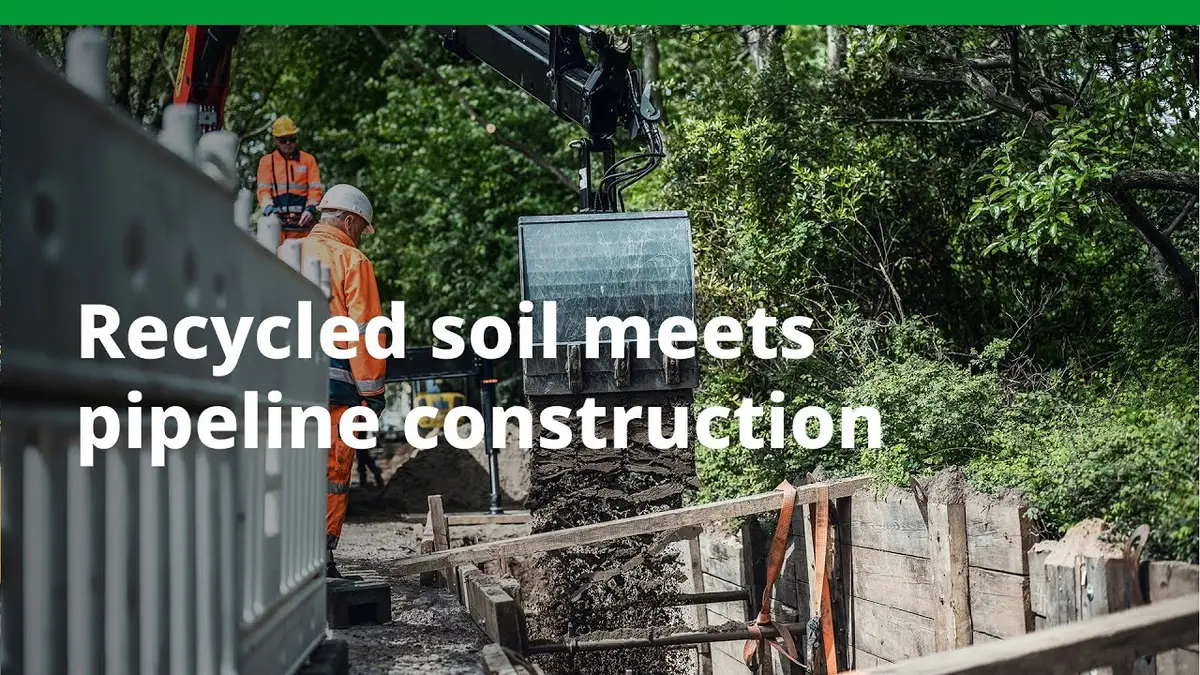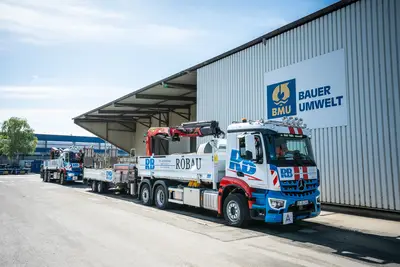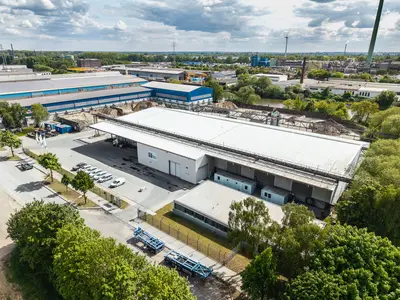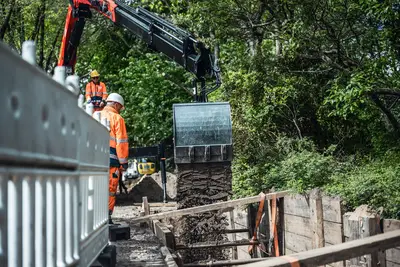Turning excavated soil into an alternative construction material: Sustainable pipework installation in Hamburg
- In the past: Soil excavated for pipework installation in Hamburg generally disposed of as waste
- Since 2019: Collaboration between Bauer Resources and Hamburg's energy networks
- The goal: Recycling and reusing soil in soil treatment centers
- The advantages: Resource conservation, cost savings, waste prevention, decreased burden on landfills, emissions reduction
Hamburg, Germany – As part of pipework installation measures carried out by Hamburger Energienetze GmbH, predominantly for the expansion of lines for electricity, gas and hydrogen, up to 40,000 t of excavated soil are generated each year. For a long time, this soil was removed as waste and rapidly disposed in landfills outside of Hamburg. Not because it was unusable, but because there were scarcely any legally compliant alternatives in the past. Instead, new sand was used as a filling material and often procured from far outside the city limits. This generated not only considerable costs, but also CO₂ emissions and logistical challenges. In light of increasing disposal costs, limited landfill capacities and a growing awareness for climate change mitigation, one question was raised more and more frequently: Isn't there any other way to do things? The answer: Yes. Soil can be reused at the site where it is excavated – as long as it is properly treated according to the German Alternative Construction Material Ordinance and considering the physical characteristics based on the QUBA certificate. This is precisely what BAUER Resources GmbH has been working on since 2019 in close cooperation with Hamburger Energienetze GmbH, adopting a pioneering role in the implementation of the Alternative Construction Material Ordinance.
Soil treatment instead of disposal
The multi-year cooperation with Hamburger Energienetze is pursuing a clear goal: Not just to dispose of excavated soil, but to recycle the soil using legally compliant and resource-efficient methods. “Together with our customers, we strive to embody and implement the circular economy by reintroducing as much material as possible into the cycle,” emphasizes Sales Engineer Yasmin Arndt from Bauer Resources. Since 2019, more than 650 construction sites with roughly 295,000 t of soil material have been executed – and with widely varying characteristics. Some soils are polluted, yet many are suitable for reinstallation. “Instead of disposing of the excavated soil at landfills like we did in the past, we take it to our soil treatment center in Hamburg. We are able to treat up to 50,000 t of soil there each year,” explains Kathrin Hagemann, Manager of the Hamburg soil treatment center. After careful analysis, the soils are treated depending on the degree of contamination with modern screen plants, for example a drum screen. Afterwards, treated materials that meet the technical and legal requirements are directly fed back into the cycle. Only heavily contaminated soils that cannot be recycled are still disposed of as waste – yet in much smaller quantities than before. After nearly two years of running the project with new legal circumstances, Yasmin Arndt confirms: “The Alternative Construction Material Ordinance can be implemented strategically – despite some challenges since its entry into force.” This law governs the manufacture and installation of alternative construction materials for all of Germany.
Advantages of recycling excavated soil
Recycling soil has measurable environmental and economical effects. Every cubic meter that is not disposed of in a landfill and replaced with new sand is a way to cut back on transport routes, CO₂ emissions, resources and money. The savings are particularly evident for truck trips: Because the soil is transported directly to the nearby soil treatment center and then reinstalled, two trips to landfills and sand pits are eliminated. “Furthermore, our customers can also deliver excavated material and pick up treated material directly. Not only is this efficient, it also prevents empty trips, saves time and reduces emissions,” remarks Sales Engineer Yasmin Arndt. Recycling also benefits Hamburg’s environment. Less sand needs to be transported, natural spaces are protected – and the pressure on already scarce landfill capacities is considerably reduced. Last but not least, owners benefit from decreased disposal costs and lower expenses for materials procurement. “In this way, a classic construction waste becomes a valuable alternative construction material – and a linear process is transformed into a functional cycle. This approach can act as a shining example for other cities,” concludes Kathrin Hagemann.
Video

In order to display the video on the US platform YouTube, we need your consent to the associated data processing, as described in our data protection declaration.

Downloads
Your Contact

Specialized press Resources, Redevelopment, Environment



